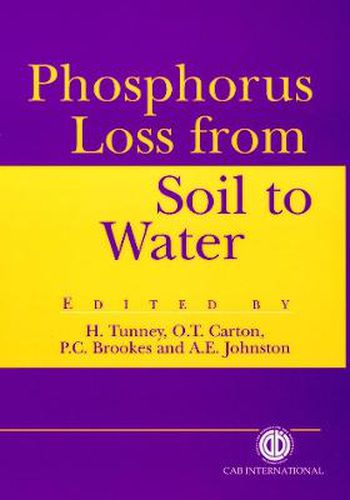Readings Newsletter
Become a Readings Member to make your shopping experience even easier.
Sign in or sign up for free!
You’re not far away from qualifying for FREE standard shipping within Australia
You’ve qualified for FREE standard shipping within Australia
The cart is loading…






Phosphorus is an essential element for plant growth and its input has long been recognized as necessary to maintain profitable crop production. However, phosphorus inputs can also increase the biological acvitity of surface waters and this can lead to the destruction of such aquatic ecosystems. Advanced eutrophication of surface water leads to problems with its use for fisheries, recreation, industry and drinking, due to the increased growth of undesirable algae and aquatic weeds, and oxygen shortages caused by their death and decomposition. It is therefore important to have a good understanding of the causes and mode of phosphorus loss from soil to water, to enable the problem to be controlled and managed. This book has been developed from an international workshop held in Ireland. It is suitable reading for all soil scientists and freshwater biologists. It is also a resource for environmentalists, ecologists and agriculturalists concerned with sustainable land management. The book is also recommended to fisheries managers, fertilizer manufacturers and biologists working for water utilities.
$9.00 standard shipping within Australia
FREE standard shipping within Australia for orders over $100.00
Express & International shipping calculated at checkout
Phosphorus is an essential element for plant growth and its input has long been recognized as necessary to maintain profitable crop production. However, phosphorus inputs can also increase the biological acvitity of surface waters and this can lead to the destruction of such aquatic ecosystems. Advanced eutrophication of surface water leads to problems with its use for fisheries, recreation, industry and drinking, due to the increased growth of undesirable algae and aquatic weeds, and oxygen shortages caused by their death and decomposition. It is therefore important to have a good understanding of the causes and mode of phosphorus loss from soil to water, to enable the problem to be controlled and managed. This book has been developed from an international workshop held in Ireland. It is suitable reading for all soil scientists and freshwater biologists. It is also a resource for environmentalists, ecologists and agriculturalists concerned with sustainable land management. The book is also recommended to fisheries managers, fertilizer manufacturers and biologists working for water utilities.